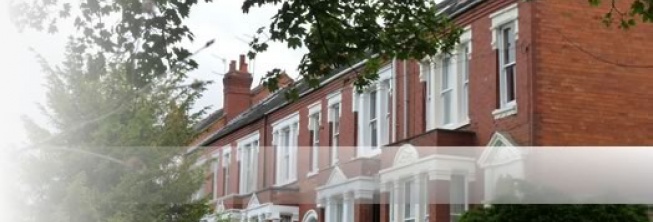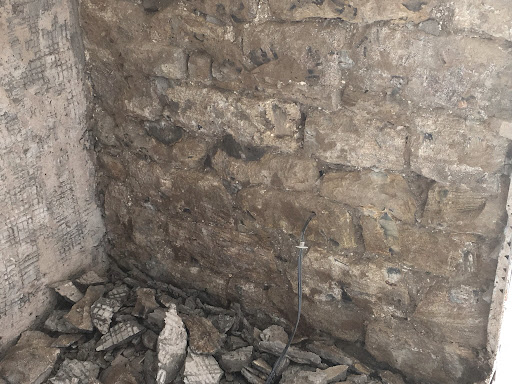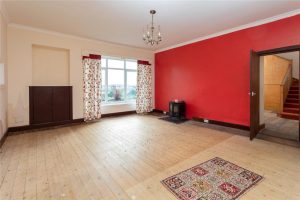Anxiety makes homeowners vulnerable to bad advice and a damp problem is one of the biggest causes of distress to owners of traditional stone-built properties.
Rochester in particular has it’s fair share of stone built property, with many in the ME1 area being Grade I and Grade II Listed.
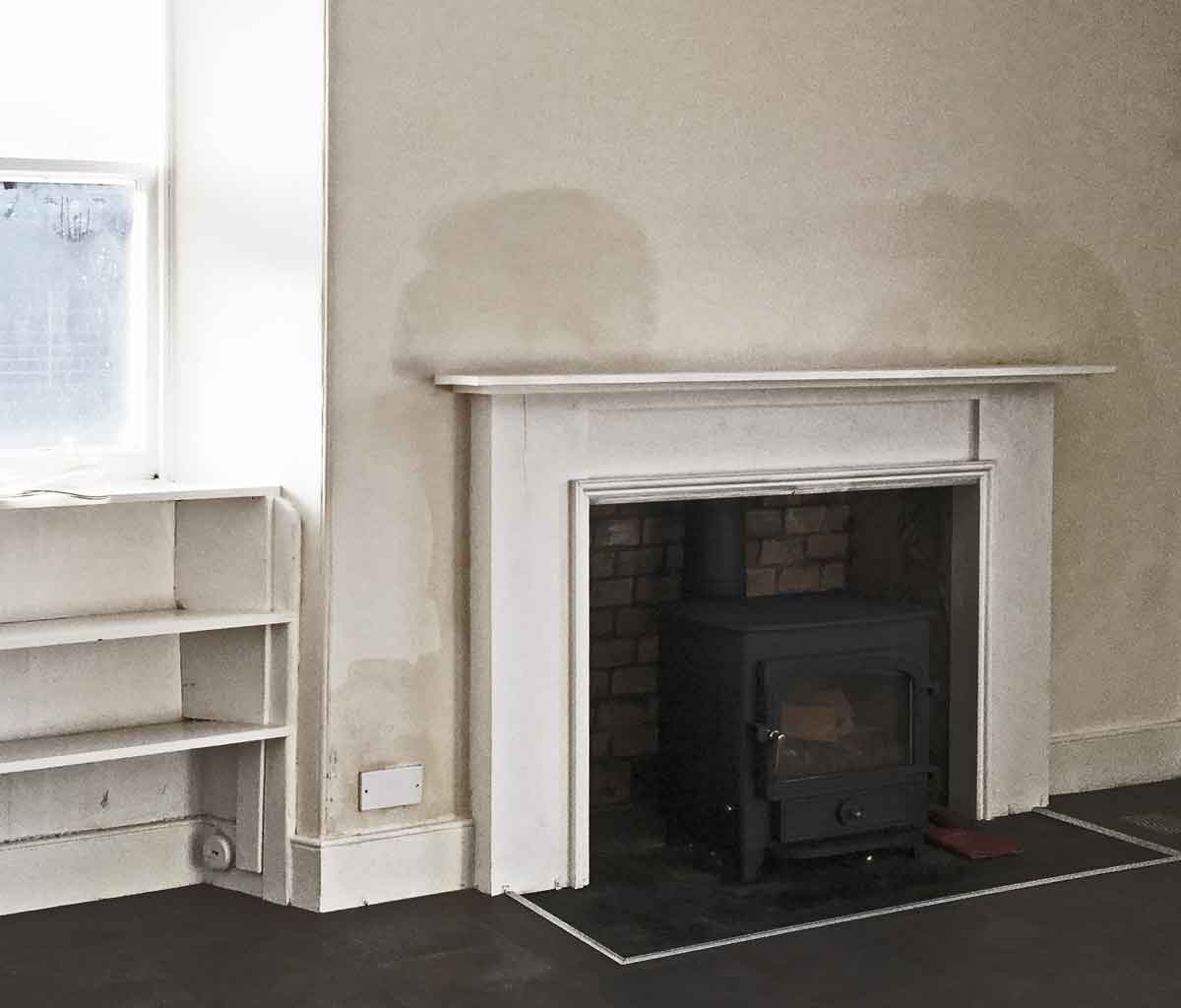
The immediate impact is the feeling of cold and chill; there is the smell and the staining looks unsightly. Longer term concerns are damage to the building fabric and the growth of rot, not to mention the potential health impacts of mould.
We were recently contacted by a local property developer who had moved into a stone-built cottage in Cuxton. He purchased the property as a cash sale and intended to live there for a year while his divorce went through.
All we were told was the cottage suffered a damp problem. It had been recommended by a Sittingbourne-based timber & damp firm that they inject a chemical damp proof course. The offer of a quick and simple solution is always welcome, but in many cases it will be an expensive mistake.

At first glance, it is easy to see why this might have appeared to be an obvious solution. The dark tide line along the wall suggests that the source of the dampness is the ground and after all, stone buildings weren’t built with barriers against rising damp. Not only was this approach based on a lack of knowledge about of the way traditional building materials work, it was also misunderstanding of modern building materials and building physics.
In this instance the damp was coming from the rain, not the ground. The stone walls had been covered in a modern cement harl that traps water and cannot breathe. Rainwater running down the wall was able to find routes behind the harl, though cracks and ledges where it was trapped. Slowly the wall became more and more saturated until staining began to appear on the interior. The now defunct Walderslade company SwiftCoat had applied the coating many years earlier at an extortionate rate.
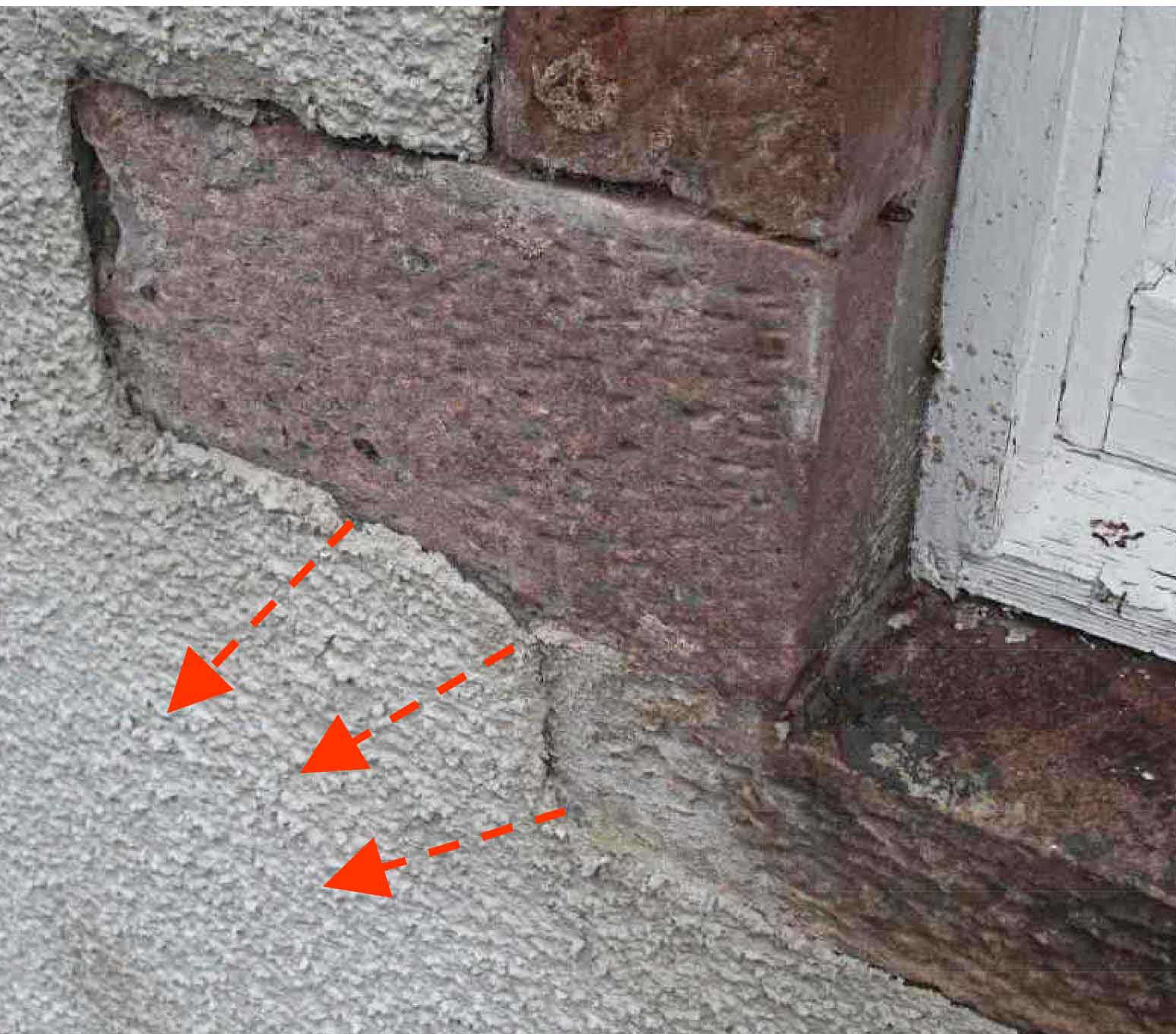
An injected DPC doesn’t work on stone walls and where the stone is a soft red sandstone like this, it will only accelerate the deterioration of the stone, through frost action. Stone buildings also move, ever so lightly, and as they do the chemical barrier will rupture, rendering it useless. In this instance, the damp wasn’t even coming from the ground.
The solution is to remove the cement harl and then either replace it with a lime harl that has been properly applied to eliminate pathways into the wall core or just repoint the stone with lime. This will allow the wall the breathe, protecting the stone and allowing the water to evaporate outwards, drying the wall out. Once a stone wall is saturated, this can take a long time, so be patient. It might sound expensive, but this remedy will actually work and is generally a lot less expensive than you think. The results are infinitely superior.
The damp areas we were asked to look at were not your typical everyday damp issues, several areas of dampness were noted up to 2m high with spots of high moisture readings all over the walls in various areas. We agreed that we would need to remove the wall plaster in certain areas to determine what was going on behind these damp patches.Once the skim coat/ surface plaster was removed we discovered an old remedial damp proofing system had been fitted in the past, a sand and cement render had been applied up to a height of 2m high throughout the ground floors, it was up to 2-3inches thick in places. This was not allowing the walls to breath properly and also providing a cold surface for condensation to form throughout the winter months.
Old stone built properties need to be treated with respect, they do not take too well to modern building techniques, we applied specialist lime-plaster once the sand and cement had been removed. This allowed the walls to dry out over time and allowed them to ‘breathe’. The inglenook fireplaces were also opened up which helps with ventilation and reduces the build up of condensation throughout the winter months.
-
To learn more about how damp may be affecting your stone built property, contact Rochester Building and Damp today to arrange your FREE Survey and Report.

